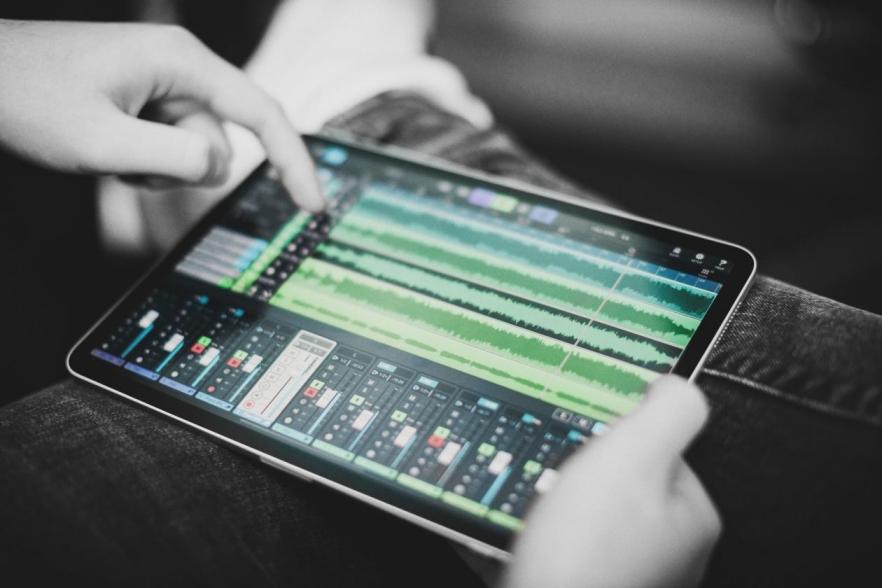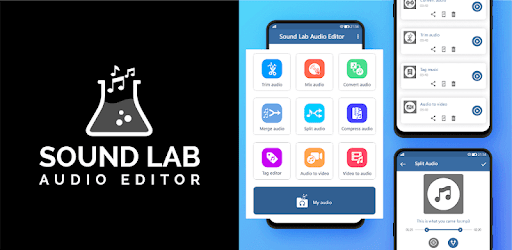Cubasis vs. SoundLab: A Music Production App Comparison
/ by hqt
The ability to craft music in the palm of your hand fulfills the dreams of countless musicians. The concept of creating tracks on the fly, without the need to haul around cumbersome equipment, has indeed sparked a revolution in the music industry.
Cubasis is not just your typical digital audio workstation (DAW); it’s a mobile music studio designed for both iOS and Android platforms. It transcends the realm of mere software; it’s an instrument in its own right. Cubasis stands as a potent multitrack audio and MIDI recording studio, distinguished by its sleek and user-friendly interface that places the essential tools right at your fingertips.
In the realm of sonic possibilities, Cubasis doesn’t disappoint. It features a rich selection of instruments, encompassing pianos, basses, guitars, and over 100 high-quality sounds spanning various musical genres, including rock, pop, jazz, and electronic music. Whether you wish to capture vocal phrases using Cubasis’ integrated Looper or quickly lay down some rhythmic foundations with pre-made loops from the Loop Browser, this versatile tool offers the creative freedom to bring your musical ideas to life with ease.

Understanding Cubasis: A Simple Overview
Cubasis, at its core, is the quintessential mobile music studio application exclusively designed for iPad. Its hallmark feature lies in its uncomplicated and sleek user interface, offering musicians and producers an intuitive platform for immediate and creative control.
Key Features and Capabilities
1) User Interface: Cubasis prides itself on providing a clear and concise user interface, ensuring that your creativity remains in the spotlight. The interface is thoughtfully designed to offer intuitive control over your musical endeavors.
2) MIDI Sequencing: Cubasis equips you with all the necessary features to transform your musical ideas into tangible creations. Its streamlined interface simplifies the recording of audio and MIDI, facilitates loop editing, and expedites the production of complete songs within minutes.
3) Audio Recording and Editing: The software boasts an intuitive user interface that grants easy access to all your music recording and editing functions. Whether it’s recording vocals, guitar, or other instruments, importing existing audio files, or commencing playback from any point within your composition, Cubasis streamlines these processes. Additionally, Cubasis empowers you to apply professional-grade effects such as compression and reverb, enhancing the depth of your recordings.
4) Virtual Instruments and Effects: Cubasis serves as a potent pocket-sized music production environment, where you can translate your creative sparks into musical compositions. Its user-friendly interface ensures that inspiration can be nurtured wherever it strikes. Cubasis enriches your creative arsenal with a diverse collection of loops, samples, and virtual instruments, enabling you to craft authentic sounds.
Pros and Cons of Using Cubasis
1) Pros:
Compatibility with both Android and iOS devices ensures widespread accessibility.
A vast array of high-quality instruments are at your disposal for song creation.
The user-friendly and intuitive interface caters to both novices and seasoned music producers.
Cubasis comes equipped with a plethora of built-in samples that can effortlessly enhance your projects.
2) Cons:
The full version of Cubasis comes with a price tag, which might be considered steep for newcomers to music production.
SoundLab: The Emergence of a Prominent Free Audio Editor
SoundLab Audio Editor Unveiled
SoundLab Audio Editor emerges as a user-friendly, free audio editing software, thoughtfully equipped with indispensable features for seamless audio file manipulation. With SoundLab Audio Editor. You can easily start your journey of audio recording, importing, editing, applying effects and later exporting your crafted audio in popular formats including MP3 and WAV.
Key Features and Proficiencies
This cutting-edge audio editing software stands proud with its offering of 16 tracks, over 20 audio effects, and unwavering compatibility with lossless output formats. Its intuitive waveform display seamlessly integrates zoom functionality, affording you precise control over your audio canvas.
SoundLab Audio Editor harnesses the power of machine learning to become a powerful force for isolating the human voice from the accompanying background. Making it an indispensable tool for noise reduction in recordings.
Additionally, SoundLab Audio Editor facilitates high-fidelity audio recording. Extended access to concurrent playback and recording with in-ear monitoring support. This versatility is further enhanced by the ability to connect an external microphone. Enables users to take advantage of features such as limiter (anti-pop) and reverb input filter.

The Advantages of Embracing SoundLab
SoundLab, as a free audio editor, comes bearing a wealth of advantages to enhance your audio editing experience, all without denting your wallet. It’s remarkably user-friendly and lends support to a plethora of widely-used audio formats, including MP3 and WAV.
1) Cost-free: SoundLab Audio Editor is available for download and use at no charge.
2) Feature-rich: SoundLab boasts an impressive array of features, including support for multiple tracks and an extensive selection of effects like EQ, reverb, chorus, and more.
3) User-friendly: The interface strikes a harmonious balance, catering to both novice users with its simplicity and experienced audio editors with its comprehensive options.
SoundLab Audio Editor marks a significant addition to the world of free audio editing software, offering a robust toolkit for creating high-quality audio files, whether you’re a beginner or a seasoned audio enthusiast.
Comparing Cubasis and SoundLab: Making an Informed Choice
User Interface
Both Cubasis and SoundLab share an intuitive user interface, simplifying interactions within the app. However, subtle differences exist between the two applications that may influence your choice based on your specific needs.
Music Production Capabilities
Cubasis presents a formidable array of features, encompassing MIDI sequencing and an extensive library of virtual instruments and effects. This comprehensive toolset positions Cubasis as a powerful resource for music composition and production, catering to both newcomers and seasoned professionals. It offers a complete music production experience, albeit at a premium price point that may merit consideration.
In contrast, SoundLab Audio Editor distinguishes itself as a free audio editing software with a user-friendly interface. This simplicity makes it a viable option for users seeking basic audio editing capabilities without delving into advanced music production features. SoundLab excels in quick audio edits and noise reduction tasks, making it an attractive choice for specific needs.
CONCLUSION
In conclusion, the choice between Cubasis and SoundLab Audio Editor ultimately depends on your specific needs and preferences in the realm of music production. Your decision should be based on your specific project requirements and your level of expertise in music production. Cubasis is the go-to choice for comprehensive music production needs, while SoundLab Audio Editor offers a simple and accessible solution for basic audio editing tasks.